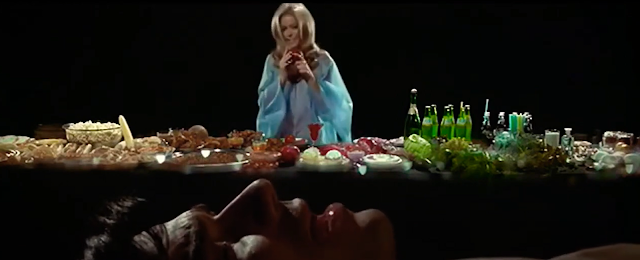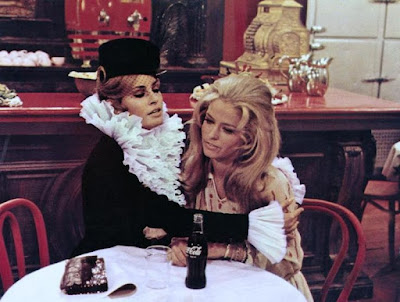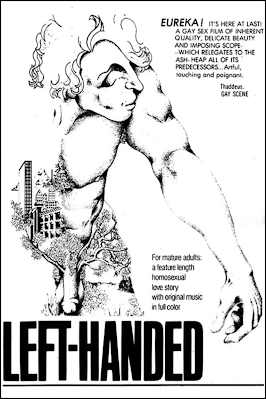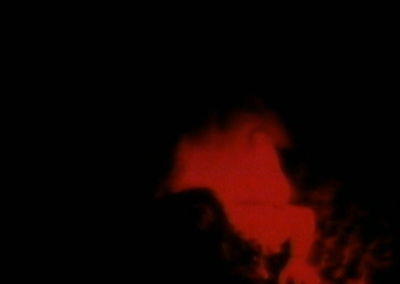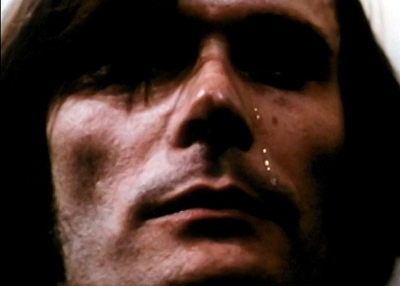 |
| The cover is the only thing I like about Rosemary Rogers’ The Insiders. |
Well, I have no one
to blame but myself. Though I’m not a fan of romance fiction, I went ahead and
bought a copy of the late Rosemary Rogers’ 1979 novel THE
INSIDERS, anyway.
In my own defense, The
Insiders is from a period in the late ’70s and early ’80s when Rogers,
primarily known for bodice-rippers, was writing more contemporary—and
more explicit—fare that seemed to be aimed at Jackie Collins’ audience. Indeed,
cover up Rogers’ name and The Insiders could easily be mistaken for one
of Collins’ or Harold Robbins’ novels. Even the book’s synopsis (“From the
breathtaking northern California coastline to the fierce, competitive media
worlds of Los Angeles and New York City, Eve is caught in a whirlwind of the
beautiful and the rich…”) suggests it’s more about a woman trying to make
it in the sordid world of show business—well, TV news in this instance—than finding
true love. I may not like romance novels, but I love books about the
sordid world of show business!
 |
| I was tempted to read these Rosemary Rogers' titles as well...until I read The Insiders. |
The Insiders is not about show business, or the TV news business. It’s not really a romance novel, either. What it is is a total piece of shit.
The synopsis was at
least honest about one thing: Eve is our main character. I guess she’s supposed
to be the heroine, except that would imply she’s admirable in some way, and
Rogers makes it clear that the only thing admirable about Eve, a former model
turned TV reporter, is her beauty. In fact, Eve’s hotness is one of her
defining character traits. The other two traits (she only has three) are her
inability to get over her ex-boyfriend David and being a total idiot.
The book’s first
chapter details how Eve is sleeping with Peter, “San Francisco’s most
fashionable analyst,” but only on weekends, and only to distract her from David’s
absence. “I take other men’s rejected lovers and make them over, doll,” Peter
tells Eve. “I fuck them into forgetfulness.” Yet despite that claim, he just can’t
fuck David out of Eve’s thoughts. Eve barely sheds any tears over David’s
predecessor, the rich, handsome Mark Blair, who was not only instrumental in
getting her a job at a local TV station but was also her lover for two years
before he fucking died, yet breaking up with David has left Eve
practically curled up on the floor in a fetal position, blubbering helplessly—until
it’s time to fuck Peter, of course.
Given Eve’s crippling
heartbreak, one would think that David is unbelievably handsome, with a successful
career, a great sense of humor, a giving lover, and always supportive of Eve
and her interests. Only the first two things are true. David’s most dominant
characteristic is being an hemorrhoidal asshole. Rogers tries to soften David’s
edges with a past tragedy, revealing that both his parents were killed in a car
wreck, leaving him to care for his siblings, ranging in age from 7 to 17, yet David’s
care amounts to little more than looking in on the kids every now and then. He
doesn’t even live with them, paying a live-in housekeeper to stay with them in
the family home in Albany, because who wants
to look after kids when you could be getting laid? (OK, I’ll grant him that, but
still….)
So, why did these
two break up? During a weekend house party thrown by Howard Hansen, a senior
partner at David’s law firm, Hansen’s conniving admin assistant/mistress Gloria sent another male guest to get into bed with a sleeping Eve, with the sole purpose of stirring shit up (and steering David to her bed). Eve
protested as soon as she discovered it wasn’t David on top of her, but the man
refused to stop doing what he was doing until David walked in. Eve was sexually assaulted,
but David just thought she was a cheating ’ho and immediately broke up with her.
Consider that foreshadowing.
Of course, a relationship
as toxic as Eve and David’s can’t end so easily. Eve poses for some cheesecake photos
that appear in Stud magazine, the photos first enraging David, then
making him so horny that he gives Eve a call. Eve, ever the doormat, is all too
happy to let David back into her life. David, however, stipulates they will not
be a monogamous couple. Though not entirely comfortable with this
arrangement, Eve goes along with it if this is what it takes to keep David.
David, of course, is jealous of her screwing other men, but feels he’s entitled
to other women. Here’s an excerpt, detailing David’s views on commitment:
Someday, David knew,
he would marry. Because it was expected of him and because it would help him
form and mold the façade he expected to present to the world. But the woman he
would marry would be carefully picked by his head and not by his loins. A
suitable wife—suitable was the key word. Well-bred and intelligent, but not too
intelligent. Not too astute or worldly-wise. Because there would always be
other women—this he already realized and accepted.
Eve eventually
comes to her senses and dumps David. Her taste in men, however, doesn’t improve.
In fact, she ends up with someone much worse: Brant Newcomb.
The Psychopath and the Jailbait Masochist
Eve encounters
Brant Newcomb earlier in the book, when she accompanies her fuck-buddy Peter to
a party thrown by “a well-known rock singer” (Eve accepts the invitation when told she’d likely appear in the society pages on Peter’s arm, which would make
David jealous). Brant is described as very handsome, very blond and very tan.
Eve wonders if he might be gay, though it’s not exactly clear why she thinks
this, especially when she knows he has a playboy reputation. Brant is also ridiculously wealthy, and about
as charming as Elon. “I think—I just have the feeling we might like the same
kind of things,” he says when he meets Eve. “Why don’t you come home with me
tonight and find out? I’d really like to fuck you, Eve.” As tantalizing as that offer is, Eve refuses. So,
Brant offers to pay her. Eve (and the reader) come away from the encounter
thoroughly disgusted.
In case it’s not
entirely clear how loathsome Brant is, Rogers introduces a subplot involving
David’s rebellious 17-year-old sister, Francie. After school one day, Francie,
her dark hair hidden under a blond wig, hitches a ride with “some old guy
driving a late-model Caddy” into San Francisco (allowing him to finger her for
his trouble), where she has an appointment with photographer Jerry Harmon—the same
photographer who took the pictures of Eve for Stud. Jerry hires her on
the spot and starts taking photos immediately. There’s one other person
present for the photo session, however: Jerry’s good friend Brant Newcomb. Brant
wastes little time propositioning her, telling her that he’ll pay double what
Jerry’s paying (exact amounts are never discussed) for her to pose for a
“special” photo, without the wig, or much else. Following the official
picture-taking, Francie joins Brant and Jerry in the bedroom, the men taking
turns snapping Polaroids of her taking turns with them. Looking at the photos
afterwards turns Francie on so much she “began clawing at Brant’s groin with
her hands [as opposed to clawing with her nose?] until he tumbled her
down onto the floor and began screwing her again, taking his time this go around,
laughing all the while at her eagerness and wildness.”
And, in case a
three-way involving two adult men and an underage girl aren’t enough for you:
His laughter seemed
to mock at [sic] her, and she got so mad she began to bite and claw at him; then
he slapped her hard, slapped her coldly again and again until her anger and
viciousness subsided, and she was clinging to him, begging him in a choked
voice to do it to her again, quickly.
“You’re one of those, are you,
you little hellion? You dig being hurt. Okay, honey, I’m willing to oblige.
Sometimes it even turns me on.”
Francie is
fully in Brant’s thrall by the time he drives her home. Two days later she’s back
for more abuse:
“How
old are you, by the way?”
His
question caught her by surprise, so that she stumbled over her lies, her voice
uncertain.
“I’m—I’m
twenty.”
He
slapped her hard, knocking her off the bed and onto the floor.
“You’re
a lying cunt. Now tell me.”
“Okay,
okay, so I’m still nineteen.”
This
time, he got off the bed and pulled her to her feet by her hair, walking her
over to the far corner of the room, where he proceeded to wipe off all her
carefully applied makeup with tissues dipped in cold cream.
Francie
wriggled and cried and called him all the filthy names she could think of until
he smacked her a few more times across the rump. Then she begged him to stop.
“I’m
seventeen,” she sobbed. “Really, I swear it. But I’ll be eighteen this year,
soon after I graduate. Honest, Brant, I’m not lying this time.”
Like an
alley cat, she rubbed herself up against him, touching him eagerly, licking at
his skin with short, urgent jabs. Suddenly, he began to chuckle, his anger
gone.
Yes,
decades before Erika Mitchell ever wrote her first sentence as Snowqueens Dragon, Rosemary Rogers was
confusing abuse with BDSM.
 |
| Rosemary Rogers demonstrating in 1985 how best to enjoy her work. |
Though he
only visits on weekends, David notices a change in Francie’s behavior. By the
time he confronts her, Francie has been a regular fixture at Brant’s place in
San Francisco, helping herself to whatever drug is offered and letting herself
be used by Brant and whoever happens to be visiting, including a rock band that
treats her so rough that even Brant feels compelled to intervene. However,
David can’t get her to confess to anything, and spanking her only turns her on,
which horrifies her oldest brother (remarkably Rogers doesn’t cross that
line). Only after Francie runs away does David learn of her relationship with
Brant, Francie ratted out by their younger siblings.
David is
furious, yet he refuses to get the police involved. Why? Because Brant Newcomb
is a client of his firm. Yep, David is putting his career ahead of the safety
of his sister. Eve just happens to know that Brant is having a party that very
night (she was invited to attend as a gay actor’s beard) and suggests David attend
so he could look for Francie. David is adamant that he cannot be involved. Eve,
on the other hand…. Eve refuses, but caves when David applies just a little bit
of emotional manipulation.
When Eve
arrives at the party she’s surprised by, as well as suspicious of, Brant’s
polite treatment of her. She accepts a drink from one of the nudie models in
Jerry Harmon’s company and then wanders through Brant’s house, keeping an eye
out for Francie. This part includes one of my favorite observations from Eve, one I had when I first moved to Atlanta: She
could smell the acrid, burned-leaves odor of marijuana—it seemed to hang in the
air, stinging her nostrils. Didn’t anyone smoke cigarettes anymore?
Eve spots
Francie, looking strung out, her dress torn, and her body bruised. The crowd is
too thick for Eve to get to her. Then, to Eve’s horror, Brant announces he’s
having a slave auction, and Francie is the featured merchandise. Eve does try to fight her way
through the crowd to get to her, but only after Brant smacks Francie
around when she protests being sold to some hippie dude named Derek and is forcibly
carried away to go live on his commune in New Mexico. Let’s repeat that: Eve
passively watches Francie get auctioned off and only springs into action when
the girl is being carried out the door. As suspected, David sending Eve to rescue his sister
made about much sense as asking Lauren Boebert to lead a college course in
theatre appreciation.
Obviously,
Eve’s too-late attempt to do fuck-all is unsuccessful. Brant dismisses her
protests, assuring Eve that Francie was auctioned off for her own good and that
Derek is a psychiatrist “into social work.” Do you trust him? Me neither, but
Eve and the reader are asked to take him at his word, because Francie is now
out of the book for good.
Now, with
Francie gone, Eve must contend with Brant, who gets her another drink and then,
under the pretense of wanting to discuss Francie, takes her to another room.
This other room is his “playroom,” and the only thing Brant wants to discuss is
fucking Eve. Eve announces she’s leaving. Brant accuses her of putting on an
act. “Eve, it’s too late to stop anything. If you want it to be rape, then I
guess I can oblige you.” And so, he does, slapping her around for good measure.
As if that’s not bad enough, the party’s other guests barge in (“We watched you
through the two-way mirror for a while,” says one), and proceed to join in,
making this a gang rape.
It only
gets worse from here.
Sorry About Raping You. Will You Marry Me Now?
We’re only
at the novel’s midpoint, and already Rogers has crammed in an epic amount of
offensive material. I’ll admit I was kind of impressed as I didn’t think she’d
have it in her. I also hoped this would be the point in the story where Eve might
develop a spine if not a personality and dump David, get violent revenge on
Brant and, only because this is allegedly a romance novel, meet a man who
actually treats her well.
Instead, this happens: After her gang rape, Eve regains consciousness in Brant’s bedroom (her drinks were drugged, naturally). Brant tells her that he had a physician friend check her out while she was out, assuring Brant that Eve would be OK. Isn’t that sweet? You better think so, because from this point forward Brant will be gaslighting Eve (as Rogers is gaslighting her readers) into falling in love with him, though maybe he’d stand a better chance if he didn’t start slapping her and threatening her with blackmail/revenge porn the moment she says she’ll go to the police.
Brant
drives Eve home, where David is waiting for her. David, seeing Eve get out of
his car, is immediately and predictably consumed with jealousy. Though Eve
doesn’t do the best job of explaining what happened to her, she does make it
clear she was raped. David, however, doesn’t believe her (“My God, everything
you’ve told me sounds like part of some crazy trip—some coke nightmare.”) He
says he’s going to leave and come back when she’s regained her senses. In a
rare show of spinal rigidity, Eve tells him not to bother, they are through. Good
for you, Eve!
Alas, Eve just can’t stand up to Brant (the only character to do so is Marti, Eve’s lesbian roommate, whose own story arc has very little bearing on the overall narrative other than adding homophobia to the list of this novel’s sins). His courting very much reads like an abusive husband pleading with his wife to come back from her mother’s, insisting he’s changed. Of course, in this case the abuser has unlimited funds and connections, enabling Brant to arrange for Eve to get tapped to audition for a nightly anchor spot with a New York City station, one of the few times in the book when her career is mentioned. Eve thinks she was selected because of her on-camera skills (that she allows her possible co-anchor introduce her to the joys of anal sex should also give her an edge) but learns the truth when Brant surprises her on her return flight home.
Then Brant
proposes, which proves, once and for all, that he is indeed a psychopath,
especially when he says: “You’re a bloody Puritan in some ways, and yet you
like to fuck, but only when you’re ready and when you want it—and that night
you wouldn’t give in, would you, you stubborn bitch? You made us take it[.]”
See, it was Eve’s fault for just not giving in.
Eve is not
stubborn bitch. Stubborn implies she is capable of thinking for herself.
No, Eve’s a stupid bitch, because she ultimately marries Brant and has a
son with him! Good thing Brant is rich, because that boy is going to need lots
of therapy, especially when he’s old enough to hear about how his parents met. Christ,
I think Massimo and Laura of 365
Days had a healthier relationship.
This book
was written during a time when rape-and-forgive trope was common
in romance fiction, especially in the bodice-rippers, which had been Rogers’
bread and butter. The thing is, while rape is no less problematic in a story
set in the 1800s, the mental gymnastics to explain it away as fantasy are less
strenuous. The 1800s weren’t exactly a time of sexual permissiveness,
especially for women, who were culturally discouraged from openly enjoying sex. “No” was the default answer, and thus men wouldn’t always accept it. But
Rogers’ rape fantasy schtick doesn’t work so well in a story set in the late ’70s,
making the mere act of reading of The Insiders feel like #MeToo experience.
Yes, men need to learn about what consent means, but it seems like romance
authors could also benefit from sitting in on those consent workshops college athletes have to attend. It’s too late for Rosemary, but maybe E.L. James could sign up, and since she’s on campus, take a few writing courses as well.
I mentioned waaaaay back at the beginning of this review that The Insiders seemed to be Rogers’ attempt to muscle in on Jackie Collins’ territory. Rogers had a more expansive vocabulary (Rogers attended the University of Ceylon; Collins was expelled from Francis Holland School at age 15), but Collins was way more playful and, in her prime, had no problem getting raunchy (The Insiders has a lot of sex, but Rogers refrains from getting too graphic). The two writers had lot in common stylistically, with both taking a laissez faire—if not just plain lazy—approach to plotting (I’m pretty sure Rogers never wrote an outline for The Insiders and just made it up as she went along); both writing American characters that sound British; and neither author having much patience for describing settings, to the point where San Francisco, New York and Los Angeles could just as easily be Fresno, St. Louis and El Paso. Like Collins’ novels, The Insiders is populated with hot, vapid people, but none of the Jackie Collins novels I’ve read were ever this mean-spirited, vile and misogynistic. Eve has no real identity or agency, so maybe it’s no surprise she’s stuck choosing between two abusers. All I know is even Collins would balk at having, say, Lucky Santangelo marry her rapist. No, Lucky would make the motherfucker pay.












